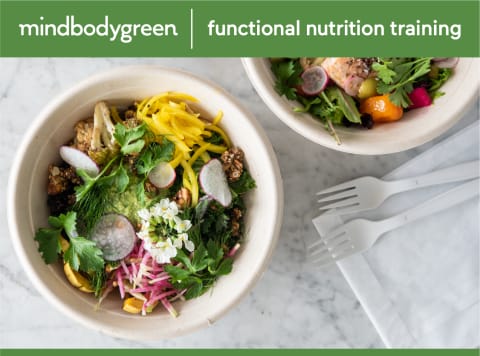Advertisement
The 20-Minute Meal Rule: How It Improves Digestion & Reduces Overeating


You likely give a good amount of thought to what you eat—but do you ever consider how long you spend eating?
Spending enough time eating each meal can greatly aid in satiety (feelings of fullness) and help to reduce overeating. Here's why 20 minutes is the ideal amount of time you should devote to each meal.
Why 20 minutes is the optimal time window for each meal
This 20-minute window takes advantage of the gut-brain connection: a two-way communication pathway that coordinates appetite and satiety based on hormones that are produced in response to food intake.
There are several hormones responsible for hunger and satiety, but the main three are ghrelin, cholecystokinin (CCK), and leptin. These hormones are made in the gut in response to the absence or presence of food. When ghrelin is high, we feel hungry1. When leptin and CCK are high, we feel full2 and are ready to stop eating.
During a meal, the satiety signals CCK and leptin are produced in response to food and nutrients entering the stomach, while ghrelin—the hunger hormone—is gradually suppressed. As these hormones fluctuate, they signal to the brain that there is optimal nutrition in the gut.
This helps to promote the feeling of comfortable satiety from a meal. This fluctuation in hormones reduces the reward from food and turns off signals to continue eating, which also helps to reduce overeating3.
But here's the kicker: These hormones don't function like light switches, meaning they don't immediately turn hunger signals on or off. They are more like volume knobs that gradually increase or decrease a signal over a period of time. This means that when we are eating a meal, our hormones are slowly shifting to tell the brain we are satisfied, but this process takes time.
The exact window of time for hormonal shifts to occur is not known, but as a registered dietitian, I say a good rule of thumb is to aim for mealtime to take a full 20 minutes or more.
This 20-minute eating window ensures that the satiety hormones from the gut are able to effectively communicate their message to the brain to signal for satiety or continued hunger. If mealtime is less than 20 minutes, we may eat past the point of satiety and find at the 20-minute mark we are overly full. (I know we have all been there before!) Alternatively, if you find at the 20-minute mark you are still hungry, eat more until you are satisfied.
Bonus tip
The takeaway
Focusing on meal length as well as the nutrient intake of your food is a great strategy to promote satiety and reduce overeating. Following the 20-minute rule is a simple but powerful way to feel your best before, during, and after mealtimes.
This strategy is also central to promoting more optimal gut health and reducing post-meal digestive discomfort. Looking for more strategies to optimize mealtime? Here are a few more of my favorite ways to improve digestion, without drastic diet changes.
